Dacia Spring vs Kia Picanto – Kumpi malli toimii paremmin arjessa?
Olipa kyse arjesta, perheestä tai pitkistä matkoista – tässä näkyvät erot.
Selvitä, sopiiko Dacia Spring vai Kia Picanto paremmin elämäntyyliisi.
Introduction: Choosing Between Electric and Petrol
In the ever-evolving automotive landscape, the Dacia Spring and Kia Picanto present unique choices for buyers looking for compact, budget-friendly vehicles. While one leans toward electric innovation, the other embodies traditional petrol efficiency. In this comparison, we delve into their technical specifications, innovations, and practical considerations to help prospective car buyers make an informed decision.
Design and Dimensions
The Dacia Spring is styled as a compact SUV, promoting an adventurous spirit with its elevated stance. It measures 3701 mm in length, 1583 mm in width, and 1519 mm in height, delivering a modern and robust appearance. With a trunk capacity of 308 liters, it offers practicality for everyday needs.
On the other hand, the Kia Picanto comes in as a sporty hatchback, measuring 3605 mm in length, 1595 mm in width, and 1485 mm in height. Despite its slightly smaller trunk capacity of 255 liters, the Picanto carries a youthful appeal and vibrant design suitable for urban environments.
Power and Performance
When it comes to powertrains, the Dacia Spring is a 100% electric vehicle, providing 44 to 65 HP through a front-wheel drive setup. It features an automatic transmission powered by a reduction gearbox, enabling a smooth ride. The Spring boasts a battery capacity of 26.8 kWh, offering an impressive range of up to 228 km, making it well-suited for city commuting.
In contrast, the Kia Picanto offers a choice between manual and automatic transmissions and features either a 1.0L or 1.2L petrol engine, providing power outputs ranging from 63 to 79 HP. Its fuel consumption stands between 5.2 and 5.7 L/100 km, depending on the variant, presenting an excellent option for long drives without the need for frequent refueling.
Acceleration and Top Speed
The Dacia Spring's acceleration time of 0-100 km/h spans between 13.7 and 19.1 seconds, depending on the configuration. Its top speed is limited to 125 km/h, which aligns with its purpose as an urban mobility vehicle.
Contrasting this, the Kia Picanto excels in performance with a better acceleration range from 13.1 to 18.2 seconds. The Picanto's maximum speed options go up to 159 km/h, making it a more thrilling choice for those who enjoy a spirited drive on various terrains.
Efficiency and Environmental Impact
In terms of environmental impact, the Dacia Spring shines with a CO2 efficiency class rating of A, emitting zero grams of CO2, which makes it an eco-friendly choice. Its energy consumption ranges from 13.2 to 14.1 kWh/100 km, reflecting its efficient electric powertrain.
The Kia Picanto, categorized under CO2 efficiency class D, produces between 118 to 130 g/km of CO2 depending on the engine choice. While it remains efficient within its class, it does fall short concerning environmental impact when compared to the Dacia Spring.
Interior and Comfort
Both vehicles seat up to 4 or 5 passengers, with the Spring designed to accommodate 4 adults comfortably. The interior is functional, featuring a simplistic layout focused on utility, fitting its budget-friendly ethos.
The Kia Picanto, however, aims for a more vibrant interior, with a greater emphasis on technology and comfort. Equipped with modern infotainment options, it caters well to the younger demographic. The overall ride quality in the Picanto is generally regarded as superior thanks to better seating configuration and materials.
Conclusion: Which One to Choose?
Ultimately, the choice between the Dacia Spring and Kia Picanto hinges on personal preferences and priorities. If you're looking for a compact SUV with a fully electric powertrain and lower running costs, the Dacia Spring is an excellent choice, especially for city dwellers concerned about emissions. Conversely, if you prefer a fun-to-drive petrol hatchback with flexibility in driving experience and better performance, the Kia Picanto stands out as a practical option. Both models have their merits, making them worthy contenders in the competitive compact car market.
Tässä mennään yksityiskohtiin: tekniset erot tarkemmin
Kustannukset ja kulutus: Taloudellisuudessa on mielenkiintoisia eroja näiden kahden mallin välillä.
Dacia Spring on hinnassa tuskin havaittava edullisempi – sen lähtöhinta on 16900 €, kun taas Kia Picanto maksaa 17900 €. Ero on noin 950 €.
Moottori ja suorituskyky: Teho, vääntömomentti ja kiihtyvyys kertovat paljon auton ajotuntumasta. Tässä näkyy, kumpi tarjoaa enemmän ajamisen iloa.
Moottoritehossa Kia Picanto on melkein huomaamaton etulyöntiasemassa – 68 hv verrattuna 65 hv:een. Ero on noin 3 hv hv.
Kiihdytyksessä 0–100 km/h Dacia Spring on vähäinen nopeampi – 13.70 s vs. 14.60 s. Ero on noin 0.90 s sekuntia.
Huippunopeudessa Kia Picanto on erottuva edellä – se yltää 162 km/h:een, kun taas Dacia Spring saavuttaa 125 km/h. Ero on noin 37 km/h.
Vääntömomentissa näkyy myös ero: Dacia Spring vetää huomattava voimakkaammin, 125 Nm verrattuna 96 Nm:een. Eroa on noin 29 Nm.
Tila ja käytännöllisyys: Sisätilat, tavaratila ja kantavuus ratkaisevat auton arjen käytettävyyden. Mukavuus ja joustavuus ovat avainasemassa.
Istuimet: Kia Picanto tarjoaa pienessä määrin enemmän istumapaikkoja – 5 vs. 4.
Omapainossa Dacia Spring on jonkin verran kevyempi – 1013 kg verrattuna 1124 kg:een. Painoero on noin 111 kg.
Tavaratilan koossa Dacia Spring tarjoaa jonkin verran enemmän – 308 L verrattuna 255 L:een. Ero on noin 53 L.
Maksimikantavuudessa Kia Picanto pärjää tuskin havaittava paremmin – jopa 1010 L, noin 6 L enemmän kuin Dacia Spring.
Kantavuudessa Kia Picanto on melkein huomaamaton parempi – 332 kg verrattuna 302 kg:een. Ero on noin 30 kg.
Yhteenvetomme: Dacia Spring osoittautuu olevan voittaa niukasti ja saa siksi tittelin DriveDuel Champion!
Tässä vertailussa Dacia Spring on monipuolisempi kokonaisuus.
Dacia Spring
Molla on tänä vuonna herättänyt paljon huomiota tyylikkään muotoilunsa ja ekologisen ajettavuutensa ansiosta. Se yhdistää saumattomasti modernin teknologian ja perinteiset arvoisat ominaisuudet, tehden siitä erinomaisen valinnan jokapäiväiseen käyttöön. Kuljettajat arvostavat sen mukavuutta ja käytännöllisyyttä, mikä tekee Mollasta suositun vaihtoehdon markkinoilla.
Tiedot @ dacia-presse.de
@ dacia-presse.de
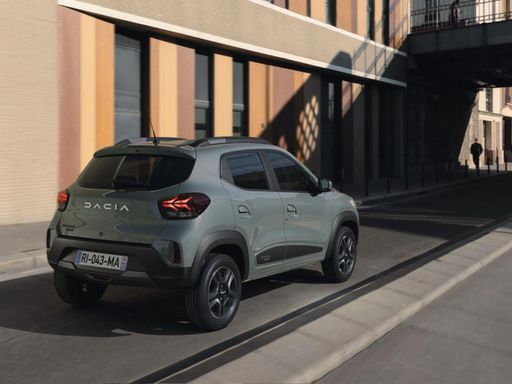 @ dacia-presse.de
@ dacia-presse.de
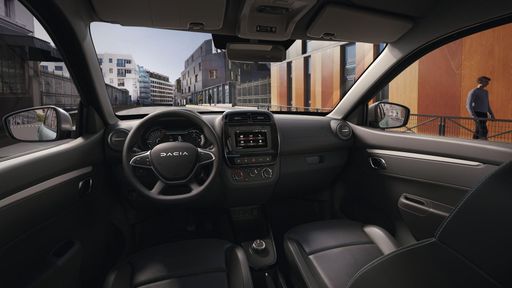 @ dacia-presse.de
@ dacia-presse.de
Kia Picanto
Picanto on kompakti ja energinen kaupunkiauto, joka yhdistää tyylikkään muotoilun ja käytännöllisyyden. Sen nykyaikaiset varusteet ja mukautuva sisustus tekevät siitä erinomaisen valinnan nuorille kuskeille ja aktiivisille kaupunkilaisille. Lisäksi Picanton ketteryys ja pienet mitat helpottavat liikkumista ruuhkaisissa katukuvissa.
Tiedot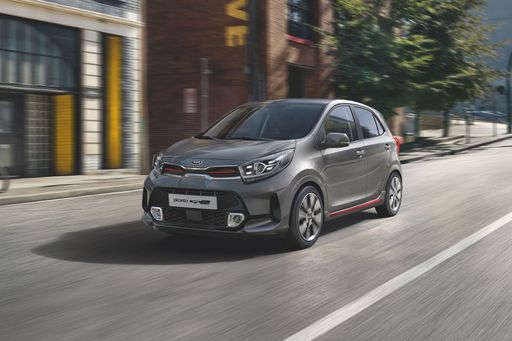 @ press.kia.com
@ press.kia.com
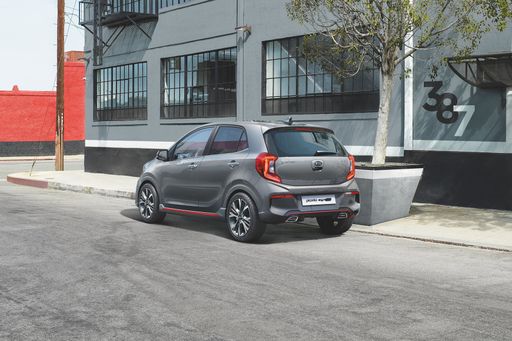 @ press.kia.com
@ press.kia.com
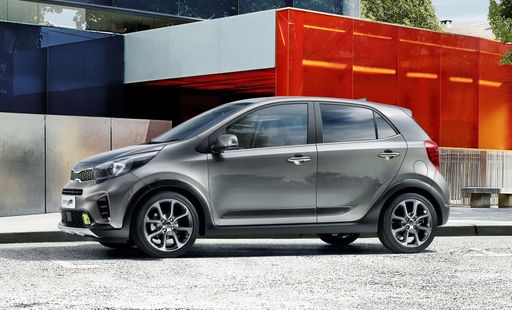 @ press.kia.com
@ press.kia.com
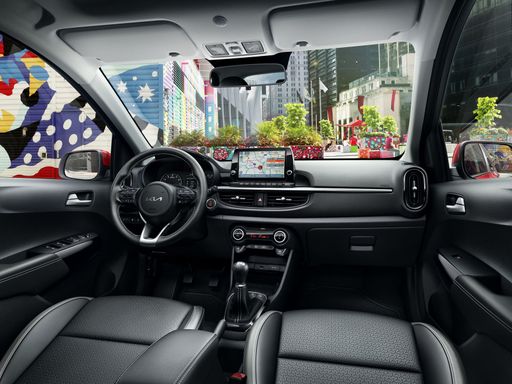 @ press.kia.com
@ press.kia.com

|

|
|
|
|
Kustannukset ja kulutus |
|
|---|---|
|
Hinta
16900 - 19900 €
|
Hinta
17900 - 22600 €
|
|
Kulutus L/100km
-
|
Kulutus L/100km
5.6 - 5.9 L
|
|
Kulutus kWh/100km
13.2 - 14.1 kWh
|
Kulutus kWh/100km
-
|
|
Sähköinen toimintasäde
225 - 228 km
|
Sähköinen toimintasäde
-
|
|
Akun kapasiteetti
26.80 kWh
|
Akun kapasiteetti
-
|
|
CO2
0 g/km
|
CO2
127 - 135 g/km
|
|
Polttoainesäiliön tilavuus
-
|
Polttoainesäiliön tilavuus
35 L
|
Mitat ja kori |
|
|---|---|
|
Kori
SUV
|
Kori
Hatchback
|
|
Istuimet
4
|
Istuimet
4 - 5
|
|
Ovet
5
|
Ovet
5
|
|
Omamassa
1013 - 1050 kg
|
Omamassa
1124 - 1131 kg
|
|
Tavaratila
308 L
|
Tavaratila
255 L
|
|
Pituus
3701 mm
|
Pituus
3605 mm
|
|
Leveys
1583 mm
|
Leveys
1595 mm
|
|
Korkeus
1519 mm
|
Korkeus
1485 mm
|
|
Maksimi tavaratila
1004 L
|
Maksimi tavaratila
1010 L
|
|
Kantavuus
265 - 302 kg
|
Kantavuus
253 - 332 kg
|
Moottori ja suorituskyky |
|
|---|---|
|
Moottorityyppi
Sähkö
|
Moottorityyppi
Bensiini
|
|
Vaihteisto
Automaatti
|
Vaihteisto
Manuel, Automaatti
|
|
Vaihteiston tyyppi
Alennusvaihteisto
|
Vaihteiston tyyppi
Manuaalivaihteisto, Automaattinen manuaalivaihteisto
|
|
Vetotapa
Etuveto
|
Vetotapa
Etuveto
|
|
Teho hv
44 - 65 hv
|
Teho hv
68 hv
|
|
Kiihtyvyys 0-100 km/h
13.7 - 19.1 s
|
Kiihtyvyys 0-100 km/h
14.6 - 17.2 s
|
|
Huippunopeus
125 km/h
|
Huippunopeus
160 - 162 km/h
|
|
Vääntömomentti
113 - 125 Nm
|
Vääntömomentti
96 Nm
|
|
Sylinterien lukumäärä
-
|
Sylinterien lukumäärä
3
|
|
Teho kW
33 - 48 kW
|
Teho kW
50 kW
|
|
Iskutilavuus
-
|
Iskutilavuus
998 cm3
|
Yleiset |
|
|---|---|
|
Mallivuosi
2024
|
Mallivuosi
2025
|
|
CO2-tehokkuusluokka
A
|
CO2-tehokkuusluokka
D
|
|
Merkki
Dacia
|
Merkki
Kia
|
Millaisia voimalinjoja Dacia Spring:ssa on saatavilla?
Dacia Spring on saatavilla Etuveto-vetotavalla.
Näytetyt hinnat ja tiedot ovat arvioita, jotka perustuvat Saksan listahintoihin, ja voivat vaihdella maittain. Nämä tiedot eivät ole oikeudellisesti sitovia.
